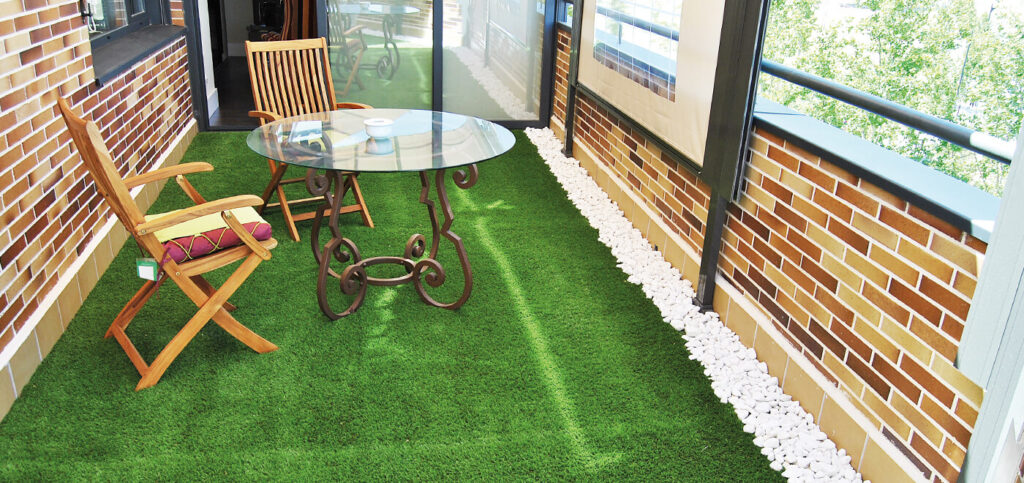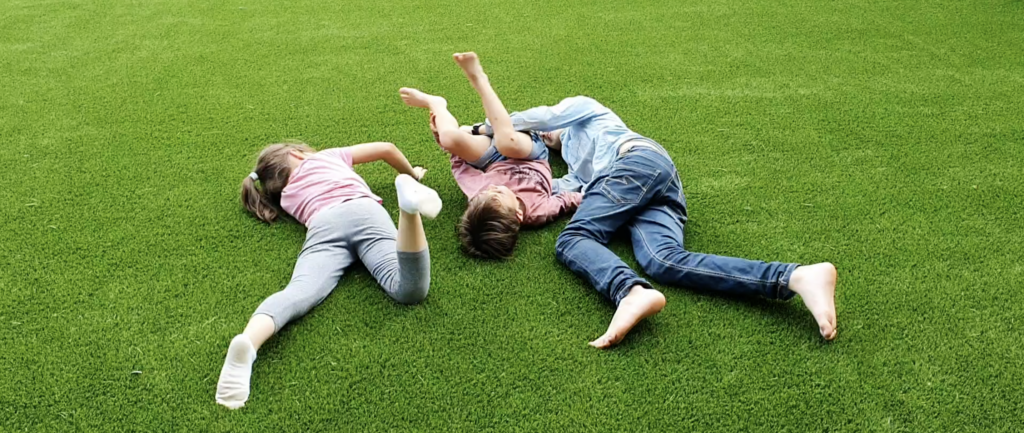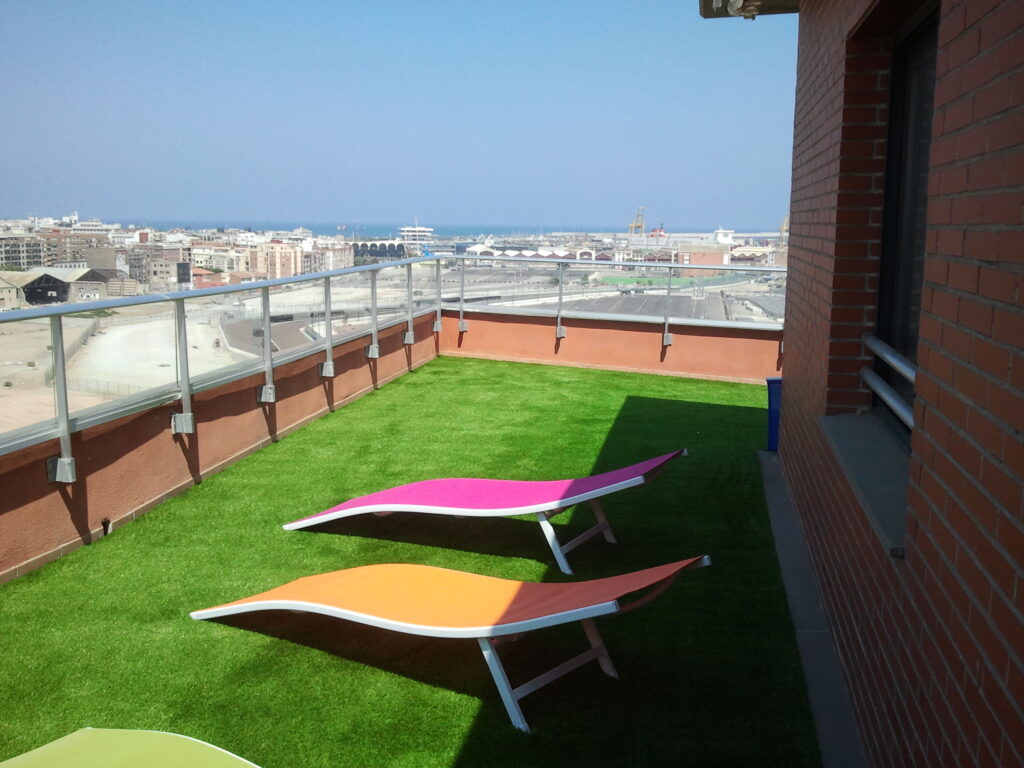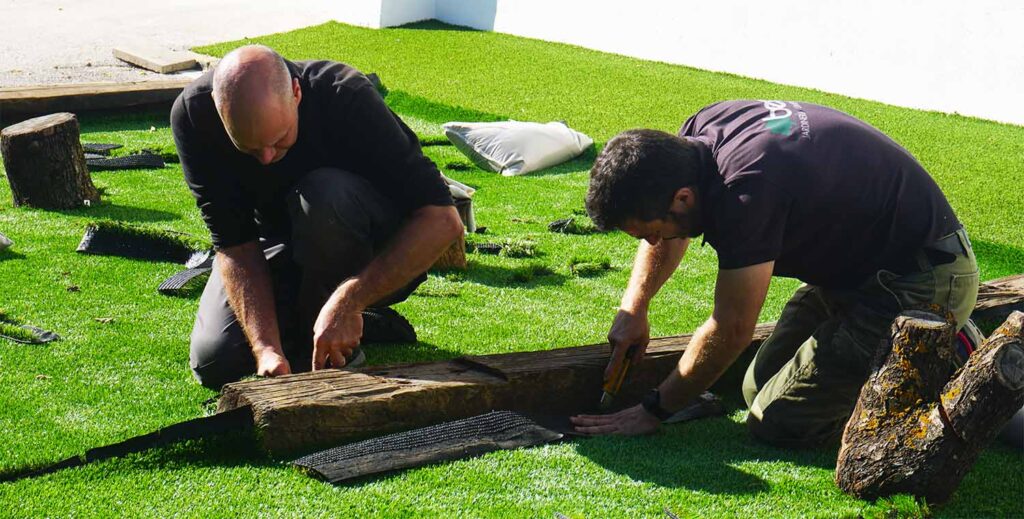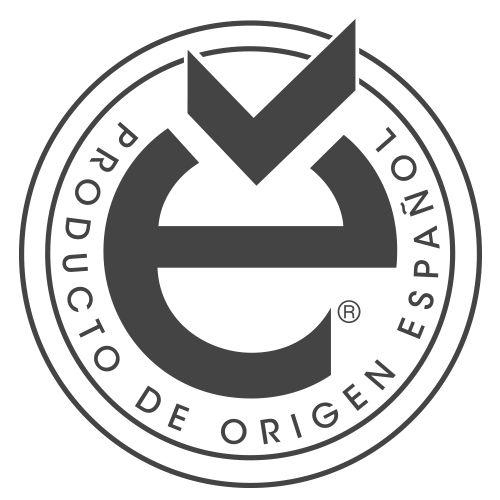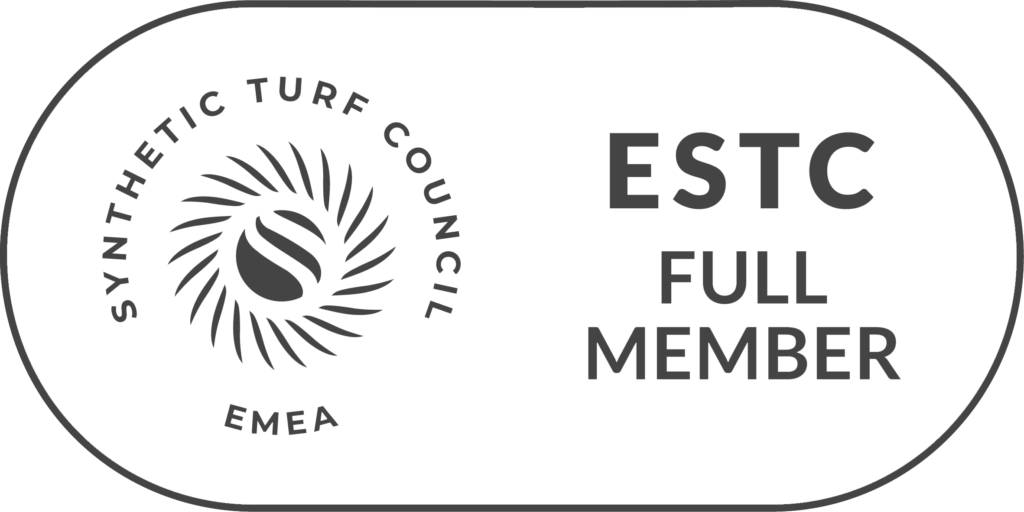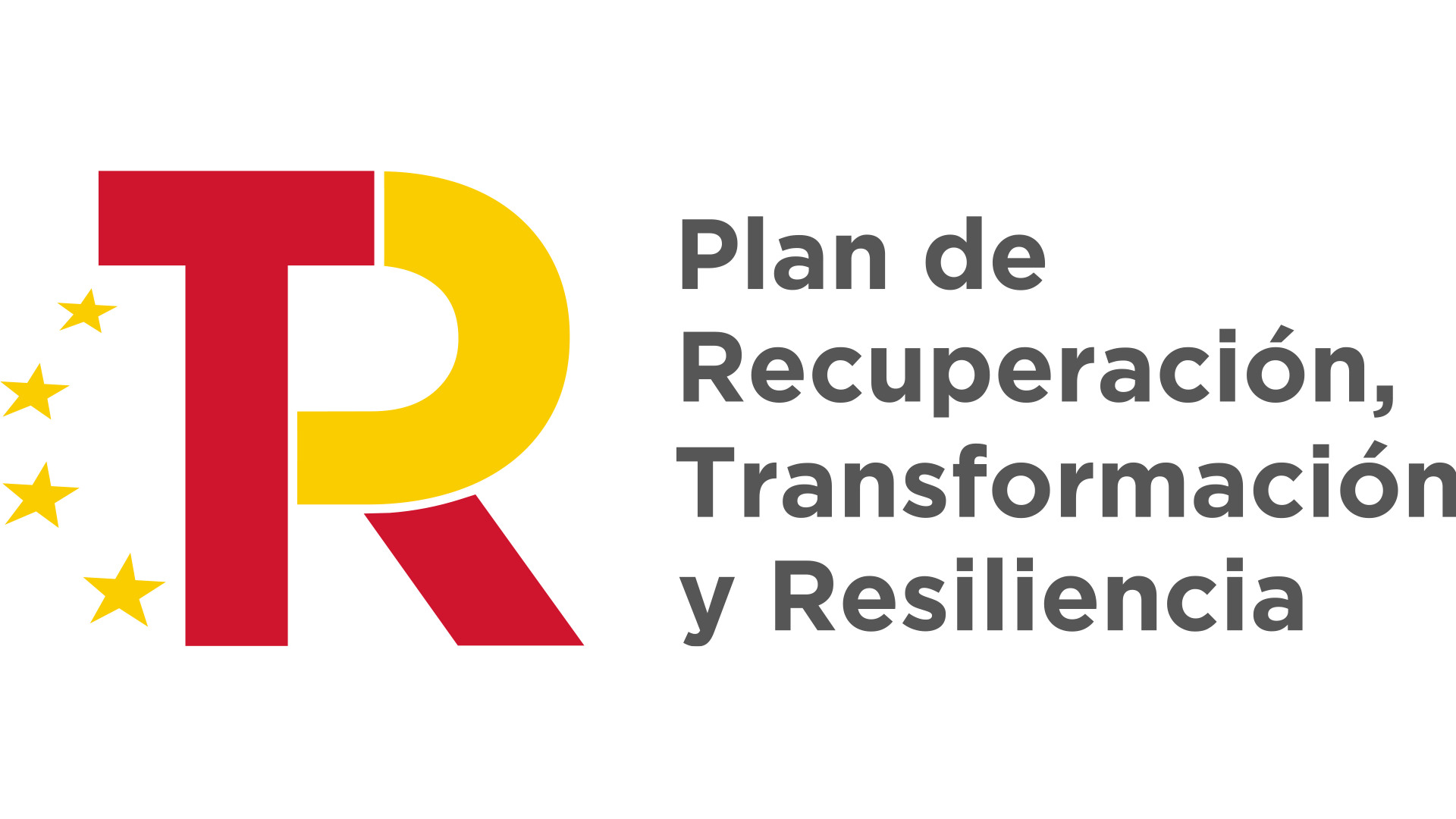With significant water savings and low maintenance requirements, artificial turf is increasingly being promoted as a replacement for natural grass on sports fields and in gardens.
However, the question remains as to whether it is an environmentally friendly alternative to natural grass.
Artificial turf has come a long way since its inception, and many people have already decided to incorporate it into their gardens for its obvious benefits.
One of the greatest advantages of artificial turf is its flexibility. While it is perfect for gardens and sports fields, artificial turf can also be used in many other places: balconies, patios and terraces, indoors, stairs, playgrounds, etc., the possibilities are endless!
Despite all that, some people are still hesitant when it comes to making the switch. The debate over natural or artificial turf is still open. But perhaps, the most important question of all is: Is it safe for the environment? Is it an environmentally friendly option?
Read on to find out and judge for yourself whether you think artificial turf is eco-friendly or not.
WATER CONSUMPTION
Artificial turf, compared to other surfaces for your garden, needs very little water for maintenance, occasionally to remove dust and dirt (especially if you have pets) and to refresh it.

This represents a considerable saving, up to 70% or more, if compared to natural grass, or even more if you live in drought areas. If compared to other surfaces such as tile or concrete the savings would not be as great but would still exist since cooling the lawn in summer is much faster than in these materials that retain more heat.
Everyone knows how important it is to conserve and use resources wisely, so in this respect artificial turf has a point in its favor.
RECYCLING
Another argument of those against artificial turf is that it is not recyclable.
Artificial turf can last up to a good 25 years; but many fear that if it is not recyclable when it reaches the end of its useful life, it will end up in landfills, generating more waste.
However, this is not entirely true, as not all artificial lawns are the same. In fact, there are many lawns that are made from materials that are recyclable. And while baking is the only part that is not, it can easily be melted down to create new products.
REDUCTION OF CARBON EMISSIONS
Many people argue as a negative point that artificial turf does not absorb carbon dioxide and release oxygen as natural grass does. This is absolutely true, but only during the day, because at night natural grass also generates CO2, part of which is fixed in the soil.
But the carbon footprint of natural turf is underestimated due to its maintenance. According to studies conducted by the University of California, pruning and mowing add energy consumption that increases emissions; in addition, one of the basic fertilizers used in parks and gardens contains nitrogen, a gas whose impact on the greenhouse effect is 300 times greater than that of CO2.
The results showed that natural grass maintenance tasks emit more greenhouse gases than they are capable of removing, so natural grass is not as environmentally friendly an option as it is thought to be.
In this sense, artificial turf requires very little maintenance and does not need fertilizers to be green and fresh as the first day. Therefore, it could be said that for its maintenance, the carbon footprint is considerably reduced compared to the natural alternative.
IS NOT LIVING VEGETATION
This is true, artificial turf is synthetic so it does not provide habitats for living creatures such as insects, plants and other organisms that are essential for breaking down and recycling organic and inorganic products that fall on the grass.
But it is also for this reason that you will never have any problems with pests and insects on your artificial turf, as they could not survive in these conditions.
On the other hand, you don’t have to just lay artificial turf, after all, you can also choose your favorite plants, flowers and shrubs to complement your lawn and add life to your garden.
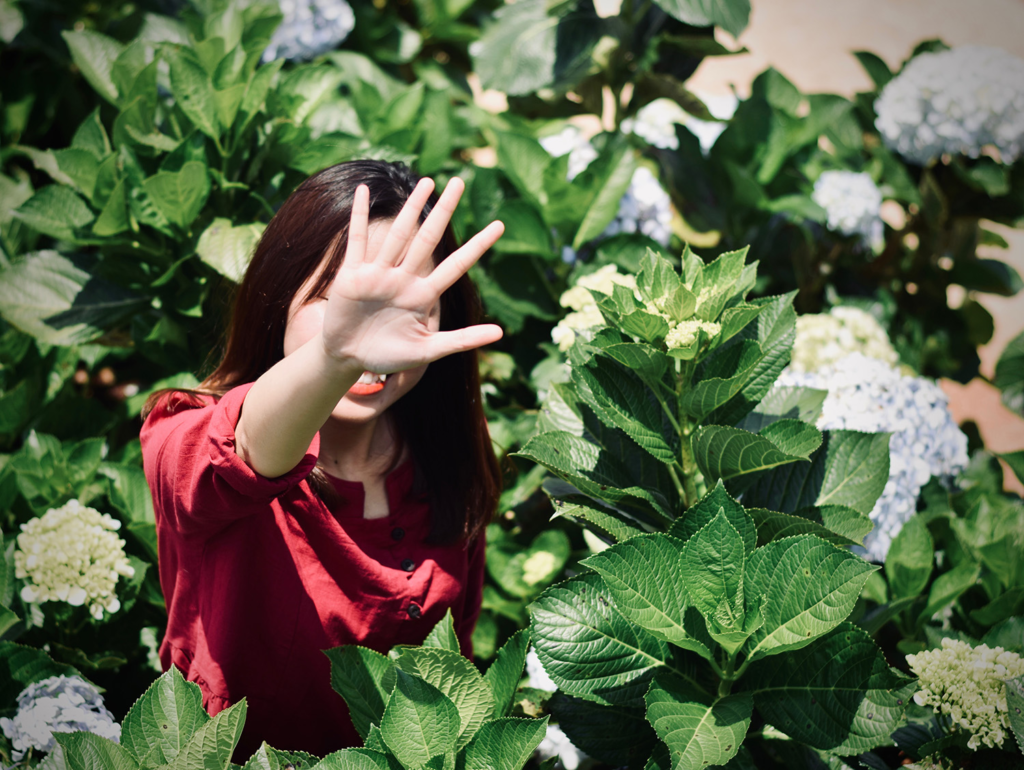

HEATING
This is another of the concerns of the people, the heating of artificial turf as it is a synthetic material. On this point it is true that natural grass is much better than artificial turf because it does not accumulate heat and disperses it.
But if we consider other artificial surfaces, such as tile or concrete, we could say that artificial turf would be a better choice because although all these surfaces absorb heat, artificial turf cools more quickly, so with a hose down you will quickly lower its temperature.
In addition, there are already options, such as Albergrass’Feelgood® technology that keeps the grass 7 to 12 degrees cooler than normal artificial grass.
TOXICITY
Another advantage of artificial turf is that it is non-toxic, at least a quality artificial turf produced according to European standards. Moreover, you don’t need to use herbicides, pesticides and fertilizers to protect it.
The chemicals used to maintain the condition of natural grass are harmful to both humans and animals (especially if you have pets). Not only that, but they can also harm the environment in ways you probably didn’t think possible. The risk comes when these chemicals find their way into local water sources such as rivers, ponds and streams.
This can happen through surface water runoff.
Once these harsh chemicals reach local waters, they can harm animal and marine wildlife. Imagine how dangerous it would be if these toxins also found their way into drinking water.
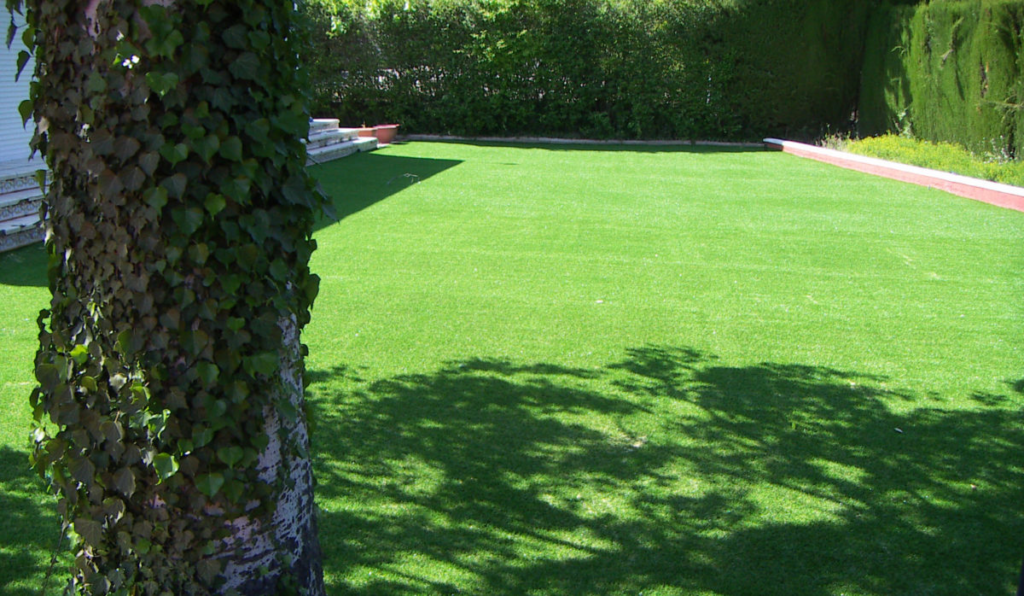
It is true that while artificial turf is non-toxic, there has been a growing concern about safety, particularly the infill materials used for its installation, such as recycled rubber.
That is why numerous studies have been conducted to assess the risks and the results consistently show that no significant health risk was associated with being or playing on these fields.
In any case, in Albergrass we always recommend using silica sand as infill, besides not having any danger, it helps to maintain the humidity of the lawn and reduce its temperature in summer.
As you can see, artificial turf has its pros and cons in terms of how environmentally friendly it is. The same goes for natural grass and other surfaces that you can choose to decorate your garden.
In any case, although artificial turf is far from perfect, after reviewing the impact it has on the environment we could say that it is not as bad as some believe. It is even possible that a good artificial turf has more benefits than drawbacks for the environment.
What do you think?


